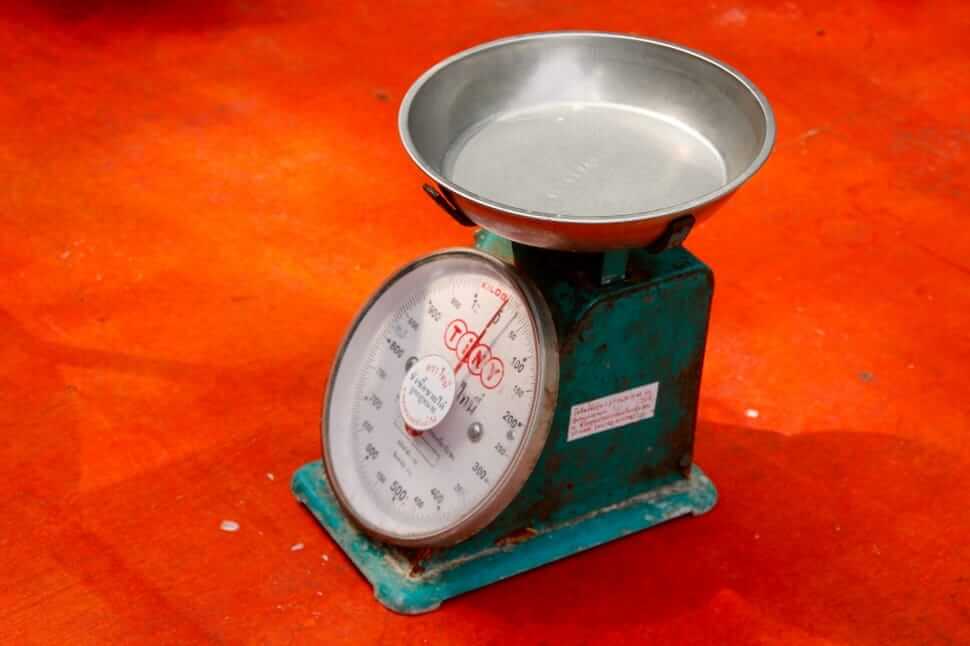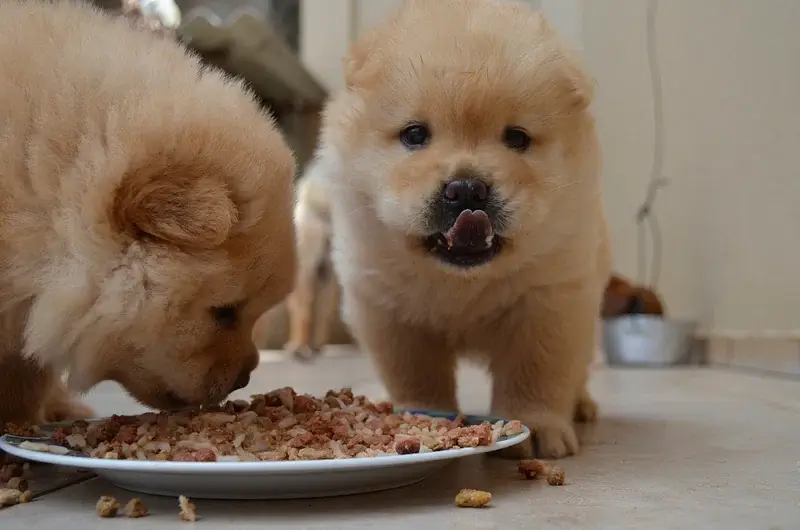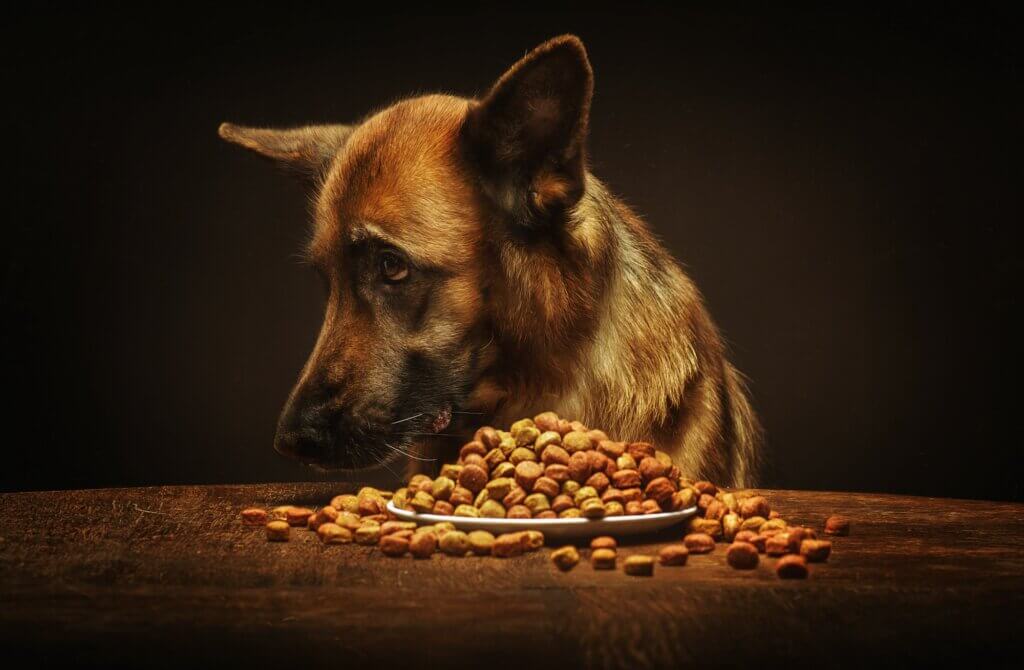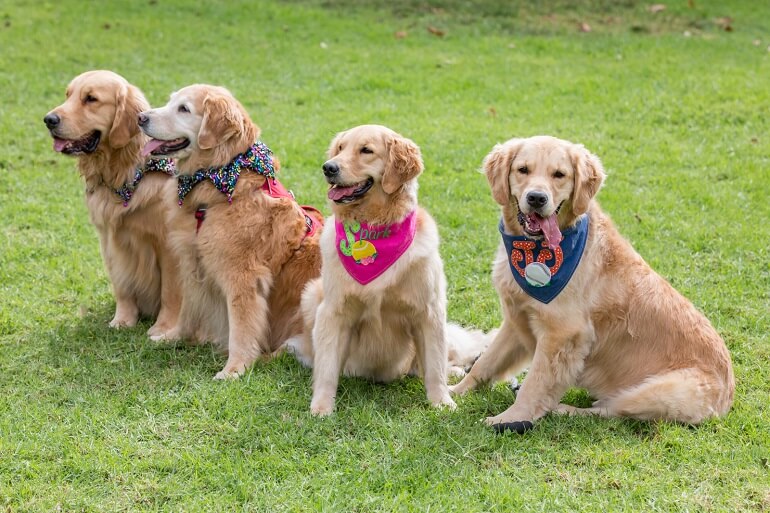How Many cups are in a Pound of Dog Food?
When it comes to ensuring your dog’s health and wellness, proper portion control is indispensable. One common question that puzzles many pet owners is “How Many Cups in a Pound of Dog Food?”. This question is more important than it may seem because it could be the difference between overeating and undereating, which can result in major health concerns like obesity, malnutrition, and digestive disorders. Understanding the exact measurement can be challenging due to factors like food type and brand variability, each possessing different densities and compositions. Typically, one pound of dry dog food is equivalent to about 4 cups, though this can vary based on brand and type.
In this comprehensive guide, we will decode the question, “How Many Cups in a Pound of Dog Food?” for you. We’ll examine different types of dog food, such as kibble, semi-moist, and dehydrated forms, and explain how their unique characteristics influence the cup-to-pound ratio. Additionally, we will dive into specific brand examples to show how different products can have varying results. By the end of this guide, you’ll be well-equipped to measure your dog’s food accurately, ensuring your furry friend receives the right amount of essential nutrients for optimal health.
Armed with this knowledge, you can now answer the critical question, “How Many Cups in a Pound of Dog Food?” for several kinds and brands, guaranteeing that your pet’s nutritional requirements are satisfied exactly. This meticulous approach to feeding not only promotes better health but also enhances the overall well-being of your dog.
Importance of Measuring Dog Food

Preventing Obesity
Overfeeding your dog can lead to significant weight gain, which in turn can cause a multitude of health problems. For instance, excess weight puts additional strain on your dog’s joints, potentially leading to arthritis or other joint issues. Additionally, overweight dogs are more likely to develop diabetes, a chronic condition that requires lifelong management. Heart disease is another serious health concern that can arise from obesity, diminishing your dog’s quality of life and longevity.
Preventing Malnutrition
Conversely, underfeeding your dog can result in malnutrition, a state where your dog does not receive the essential nutrients required for a balanced and healthy life. Nutrient deficiencies can weaken your dog’s immune system, making them more susceptible to infections and illnesses. It can also impede proper growth and development in puppies and younger dogs, leading to long-term health issues.
Ensuring Correct Portions
Understanding “how many cups in a pound of dog food” is critical for serving the correct portions. The density and composition of different types and brands of dog food can vary, making it essential to measure accurately. By doing so, you ensure that your dog gets the right amount of food tailored to their specific needs, whether they require a high-protein diet, have specific allergies, or need weight management.
Promoting Digestive Health
Proper portion sizes are crucial to maintaining your dog’s digestive health. Overfeeding can lead to gastrointestinal issues like bloating and constipation, while underfeeding may result in an upset stomach or nausea. Accurate measurement ensures that dogs with sensitive stomachs or specific dietary requirements can maintain a balanced and digestible diet. Consistent and appropriate portions help regulate digestion, leading to healthier and happier pets overall.
The Standard Measurement
When it comes to feeding your dog, it’s essential to use standard measurements to ensure they receive the right amount of food. “How many cups in a pound of dog food?” is a frequently asked question. However, this can vary depending on the type of dog food and its density. Always remember, using a kitchen scale is the most accurate way to measure dog food. By following these standard measurements, you can help maintain your dog’s health and well-being.
Factors That Affect Measurement

Types of Dog Food
Different forms of dog food, such as kibble, semi-moist, and dehydrated, will have varying densities and weights. Kibble, the most common type of dry dog food, is typically lightweight and can easily be measured using standard cups. However, semi-moist dog foods contain higher moisture content, making them denser and heavier per unit volume. Dehydrated dog food, on the other hand, is extremely lightweight but expands significantly once rehydrated. These differences in texture and composition mean that the weight-to-volume ratio will vary for each type, making it crucial to measure each form appropriately to ensure accurate portion sizes.
Brand Variability
Various brands produce dog food with different compositions and densities, which affect the weight-to-volume ratio. For instance, a premium brand may use high-quality meat proteins resulting in a denser kibble, whereas a budget brand might include fillers that lighten the product. Furthermore, even within the same brand, different formulas—such as those designed for puppies, seniors, or specific health conditions—can have varying densities. Therefore, always refer to the feeding guidelines provided by the specific dog food brand and consider weighing the food to ensure your dog receives the correct amount of nutrients.
How to Accurately Measure Dog Food
Measuring your dog’s food accurately is important for maintaining their health. Here are some simple tips to ensure you’re feeding the right portion sizes:
- Use a Kitchen Scale: The best way to measure dog food accurately is by weight, not volume. A kitchen scale can help you avoid guessing and ensure you provide the exact amount. This precision is especially important when understanding how many cups there are in a pound of dog food.
- Read Feeding Guidelines: Always check the feeding guidelines on the dog food packaging. These guidelines will give you an idea of the right portion size based on your dog’s weight and activity level.
- Measure Consistently: If you use a measuring cup, always level it off. Uneven measurements can lead to overfeeding or underfeeding your dog. Remember, how many cups in a pound of dog food can vary by brand and type, so consistency in measurement is key.
- Know Your Dog’s Needs: Factors such as age, breed, and health can affect how much food your dog needs. Regularly adjusting the portion size can help keep your dog at a healthy weight.
- Transitioning Food: When switching dog foods, do it gradually to avoid upsetting your dog’s stomach. Mix new food with the old food over several days, slowly increasing the amount of new food.
Converting Between Pounds and Cups

When it comes to understanding how many cups are in a pound of dog food, converting between pounds and cups can seem tricky. Here are some simple tips to help you make accurate conversions:
- Check the packaging: Dog food packages often provide feeding guidelines that include both cup measurements and weight. These guidelines can help you figure out how many cups in a pound of dog food for that specific brand.
- Use a Standard Cup: When measuring dog food, always use a standard 8-ounce measuring cup. This consistency ensures you get the right amount each time.
- Know the Density: Different types of dog food have different densities. For example, kibble is usually lighter and takes more volume to make up a pound, while wet dog food is heavier and denser. Understanding this can help you determine how many cups in a pound of dog food.
- Kitchen scales are key. For the most accurate conversions, use a kitchen scale. Weigh the food first, then measure it by cups. This method is especially useful because it accounts for variations in dog food density and type.
- Keep It Consistent: Always measure food the same way each time. This consistency helps you keep your dog’s diet stable and avoids overfeeding or underfeeding.
Practical Examples
Example 1: Measuring Kibble for a Medium-Sized Dog
Assume, for example, that your 30-pound medium-sized dog needs two cups of kibble every day in accordance with the feeding recommendations. To ensure that the right quantity is being fed
- Use a Kitchen Scale: Measure out 8 ounces (1 cup) of kibble using a standard measuring cup.
- Weigh It: Place the kibble on the kitchen scale to verify its weight. Repeat for the second cup, ensuring you have exactly 16 ounces or 1 pound of kibble.
- Divide the Portions: If your dog eats twice a day, divide the 2 cups (1 pound) into two equal portions—1 cup per meal.
Example 2: Measuring Wet Dog Food for a Small Breed Dog
Suppose you have a 10-pound small breed dog that requires 1 pound of wet dog food per day:
- Check Feeding Guidelines: Confirm the recommended daily amount on the can or packaging.
- Use a Kitchen Scale: Open the can and place the wet food directly on the kitchen scale to measure 1 pound of food.
- Divide the Portions: If your dog eats three times a day, evenly divide the 1 pound of wet food into three portions — approximately 5.3 ounces per meal.
Frequently Asked Questions (FAQs) about How Many Cups in a Pound of Dog Food
For dry dog food, how many cups is a pound?
A pound of dry dog food generally equates to around 4 cups, but this can vary slightly depending on the brand and type of kibble.
How many cups of food should a dog eat per pound?
The amount of food a dog should eat per pound can vary greatly depending on the dog’s age, breed, activity level, and the type of food. It’s best to consult the specific feeding guidelines on your dog food packaging or ask your veterinarian for personalized advice.
How does dog food packaging affect measurement?
Dog food packaging often includes feeding guidelines and measurement tools, such as scoops or cups, which help pet owners measure accurate portion sizes, ensuring their dogs receive the proper nutrition.
Can wet dog food be measured the same way?
Wet dog food cannot be measured the same way as dry kibble due to its higher density and moisture content; it’s best to use a kitchen scale for accuracy.
Why is measuring by weight more accurate than by volume?
Measuring by weight is more accurate than by volume because it accounts for variations in the density and moisture content of different types and brands of dog food.
YOU MAY ALSO LIKE:
How Much Protein is in Dog Food?
How to Make Dog Food
how long to feed a dog puppy food
What is The Cost to Make Homemade Dog Food?
How to Make Homemade Raw Dog Food
How to Make Homemade Dry Dog Food
How to Prepare Dog Food at Home for Senior Dogs
How to Train a Dog That is Not Food-Motivated
How Much Food Should I Feed
How To Store Dog Food
How Much Time Can a Dog Survive Without Consuming Water
How Long Can a Dog Survive Without Food?

